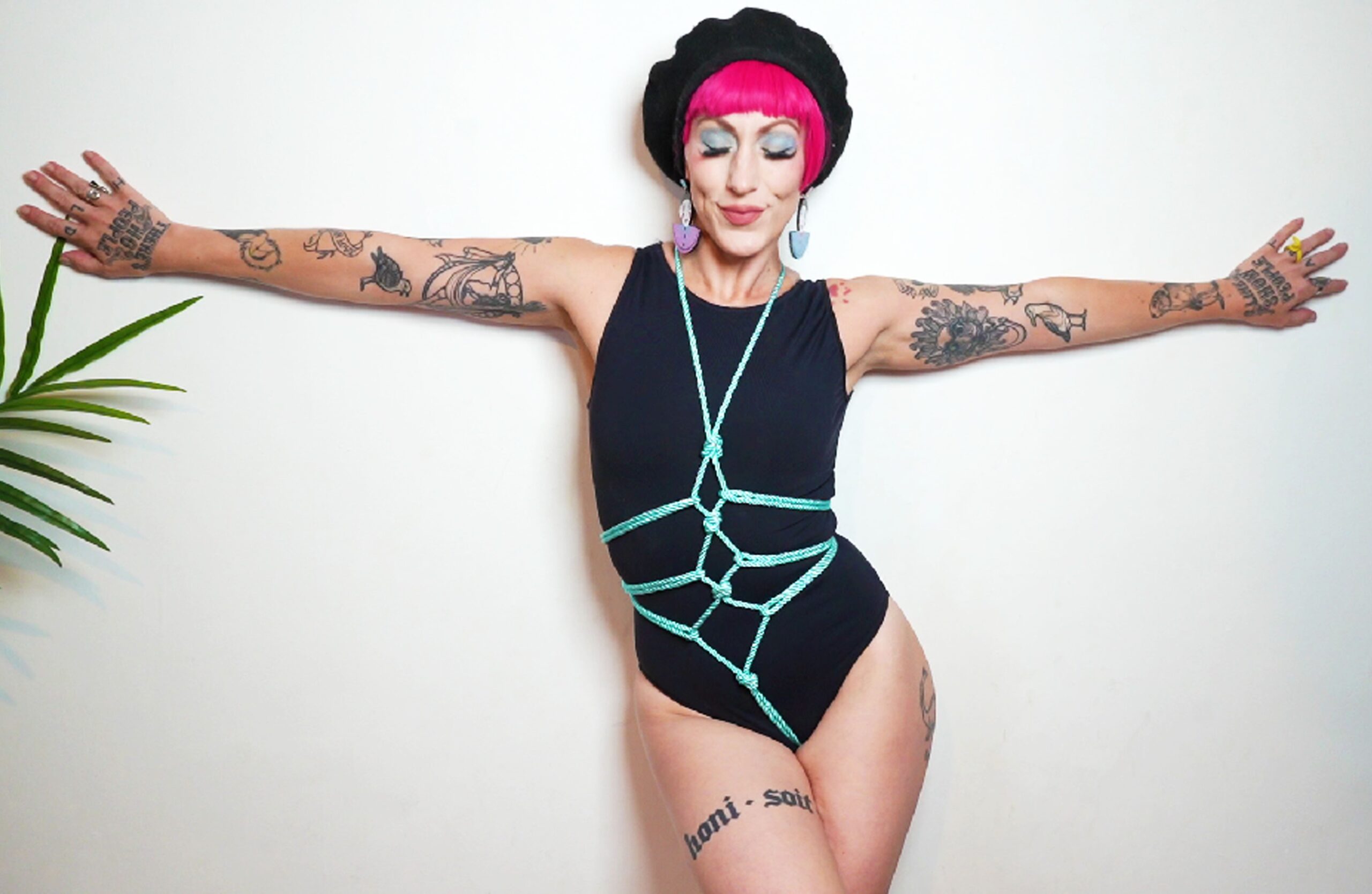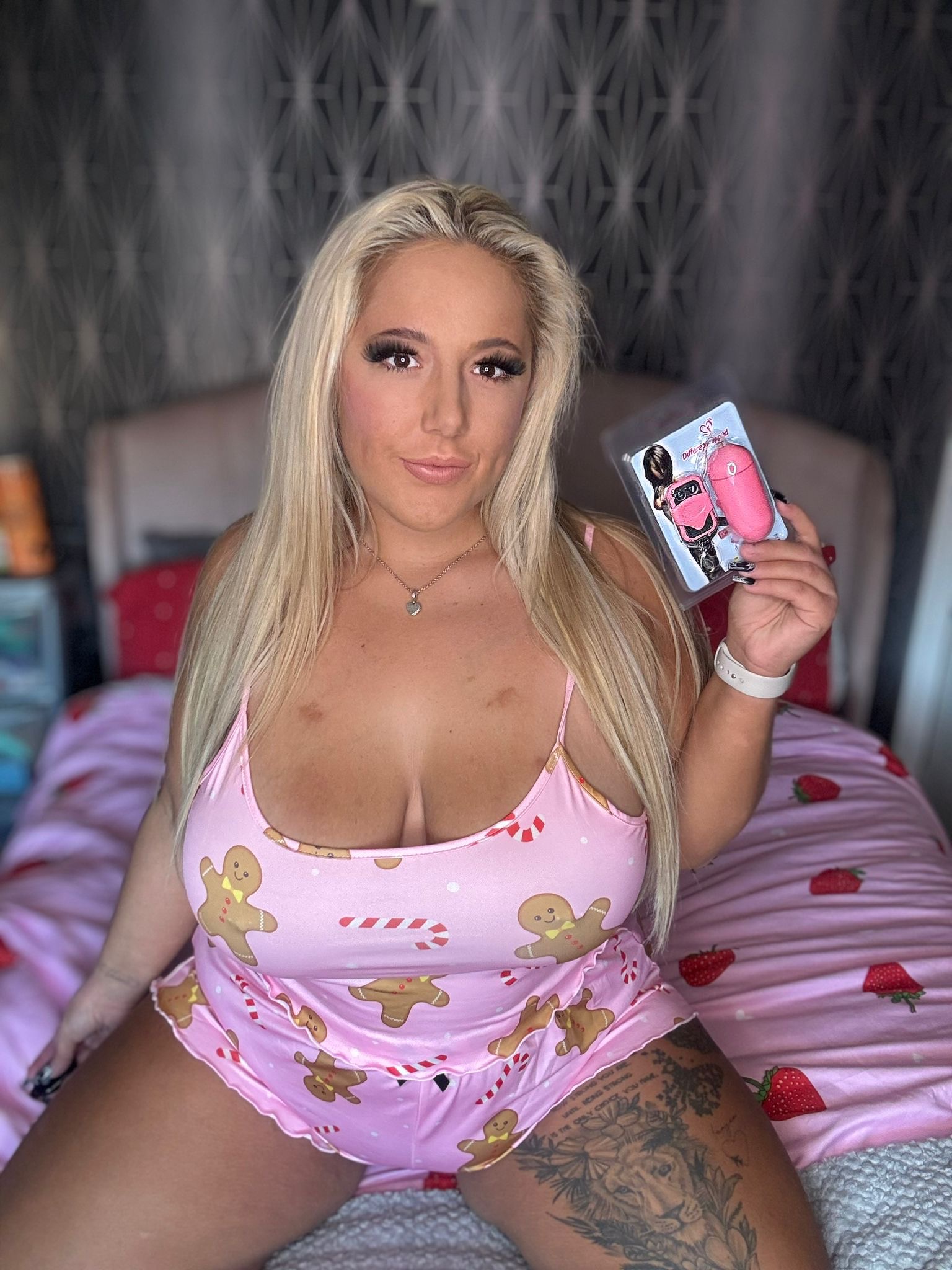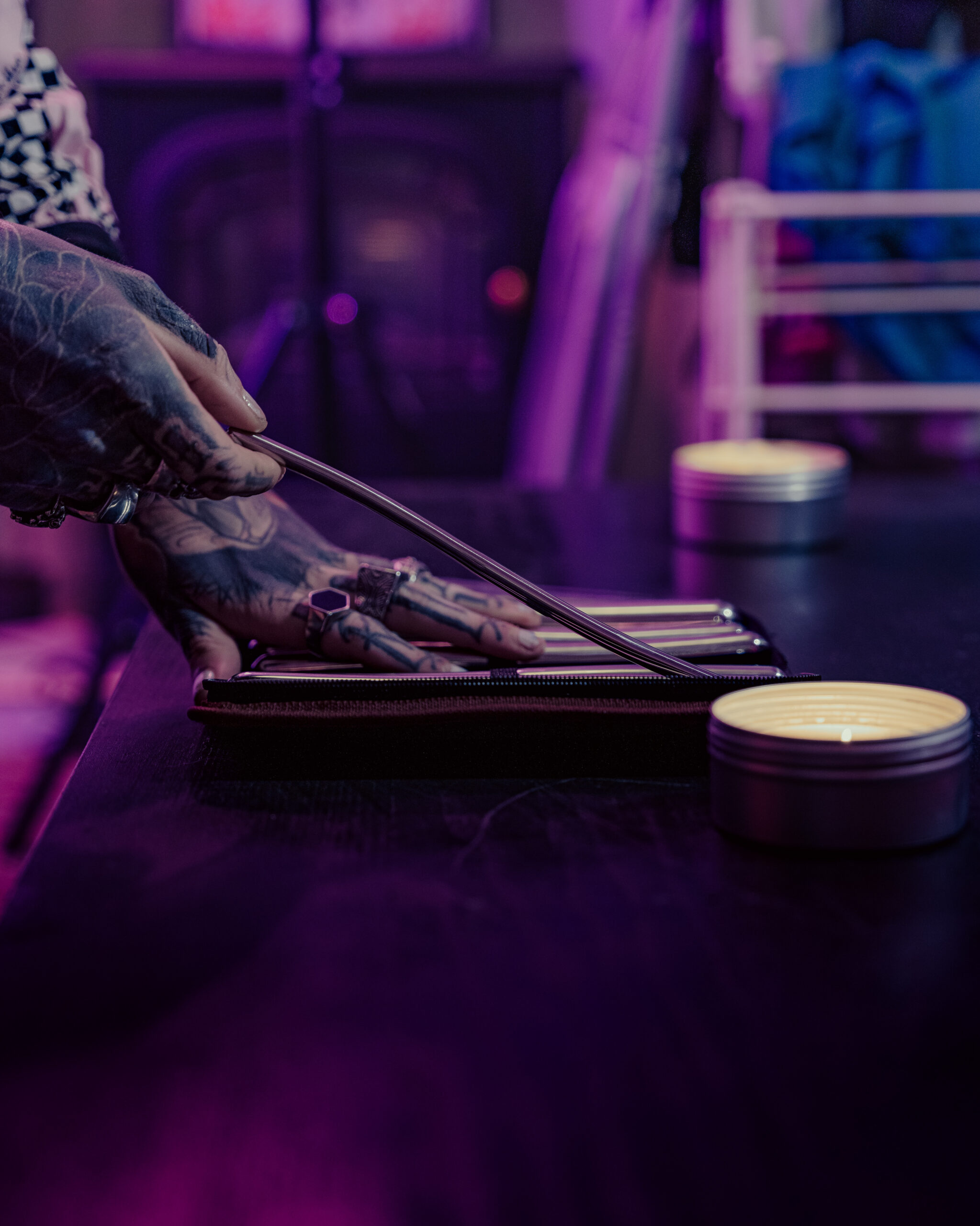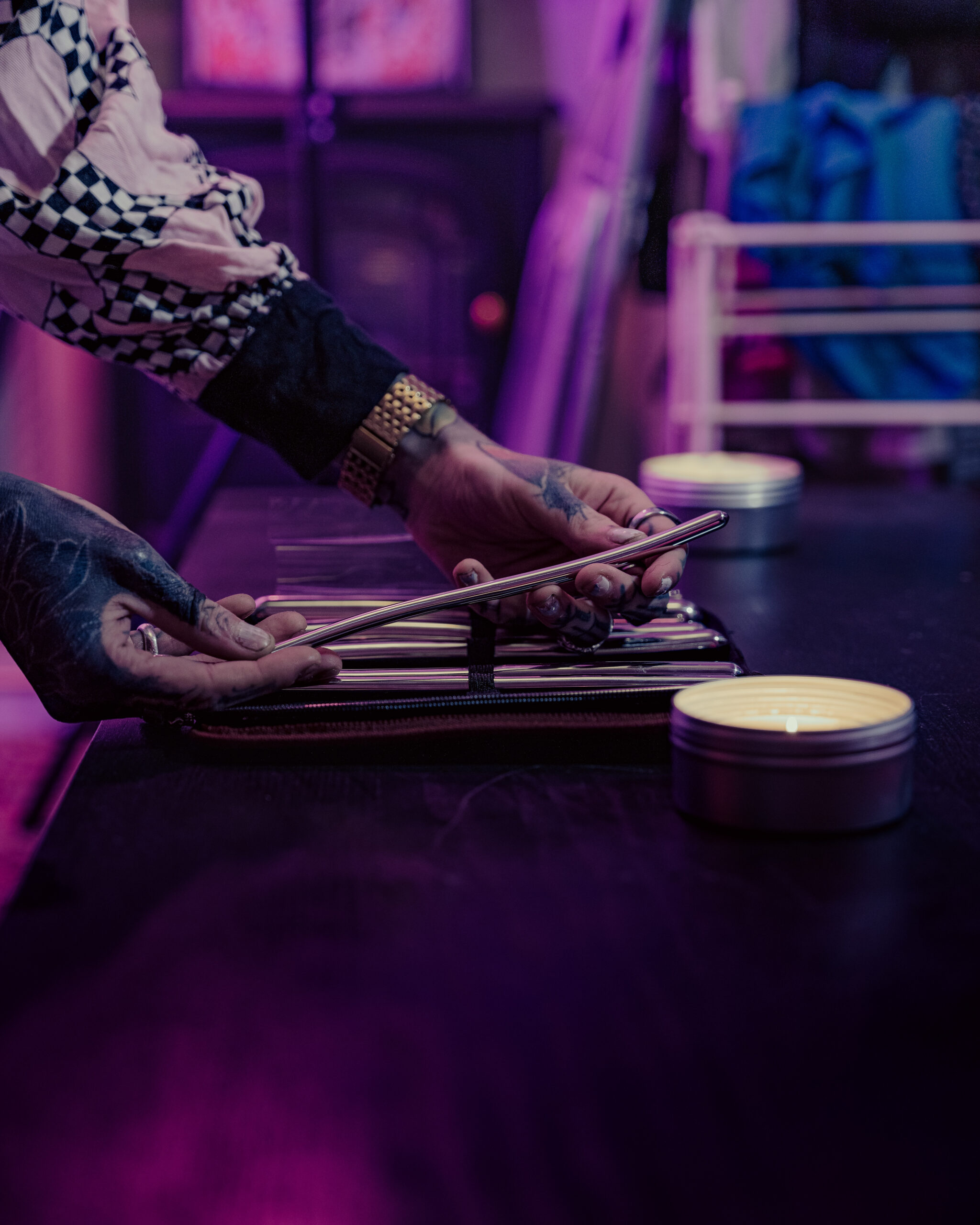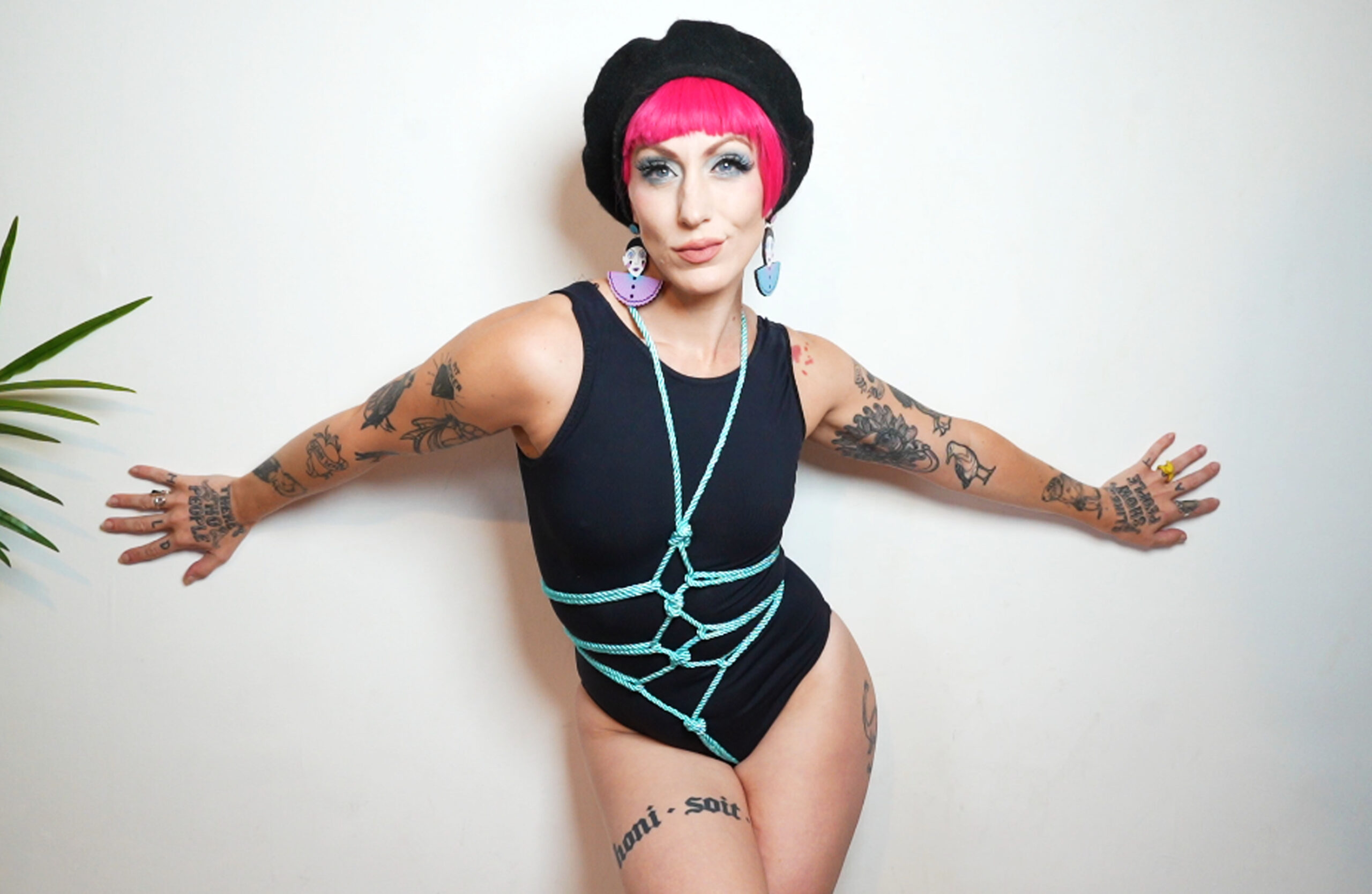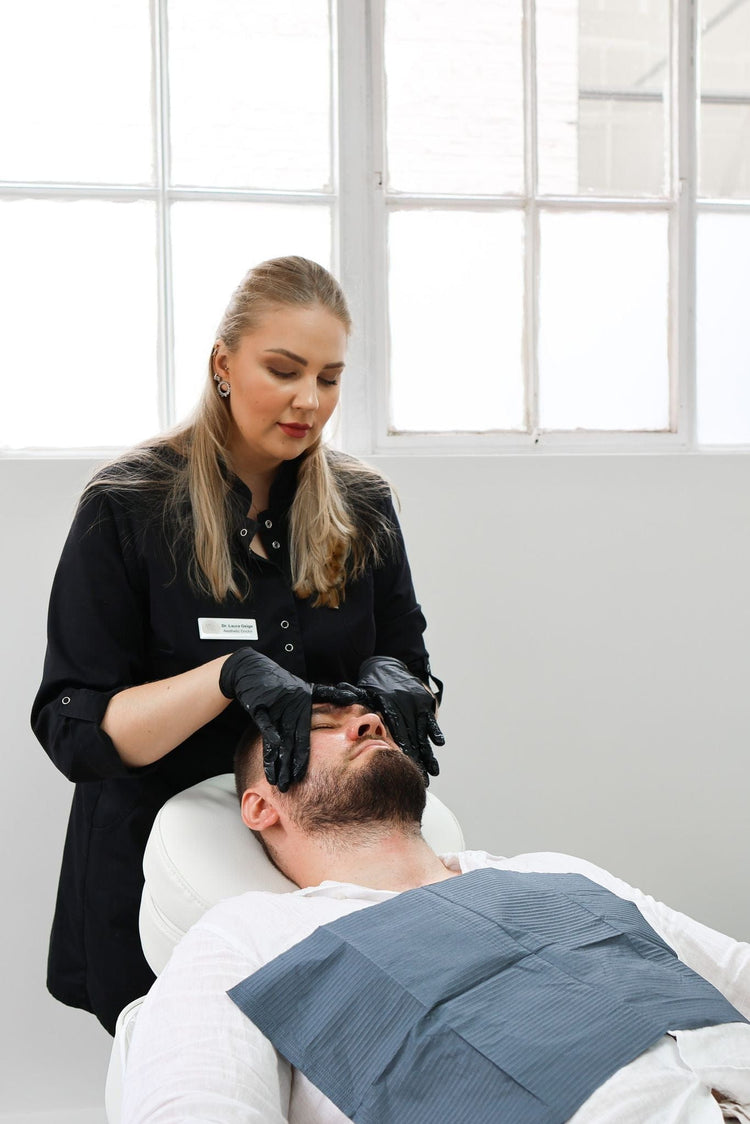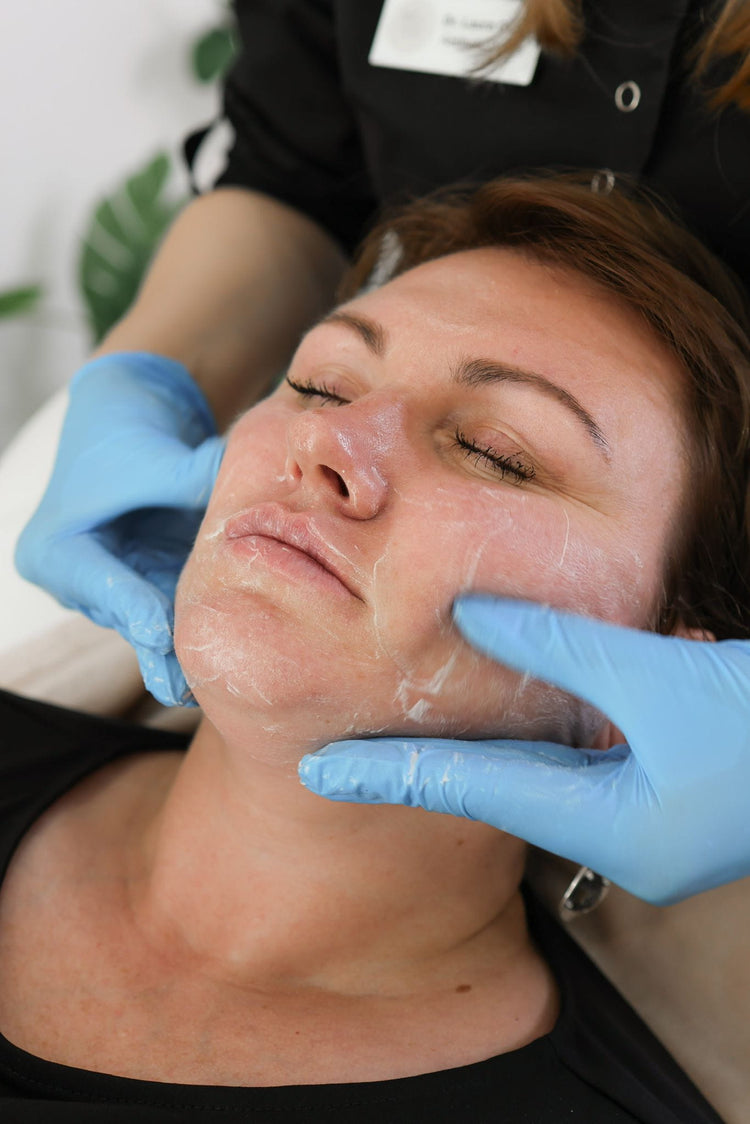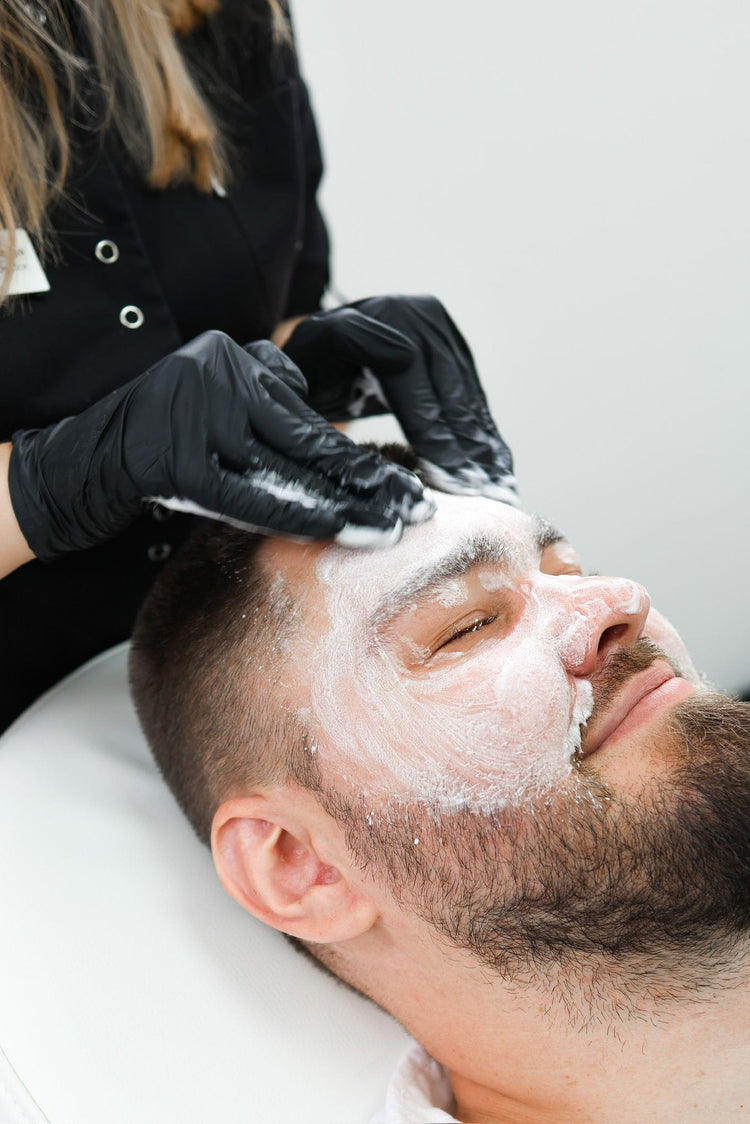29 Erogenous Zones You Must Stimulate For Maximum Pleasure
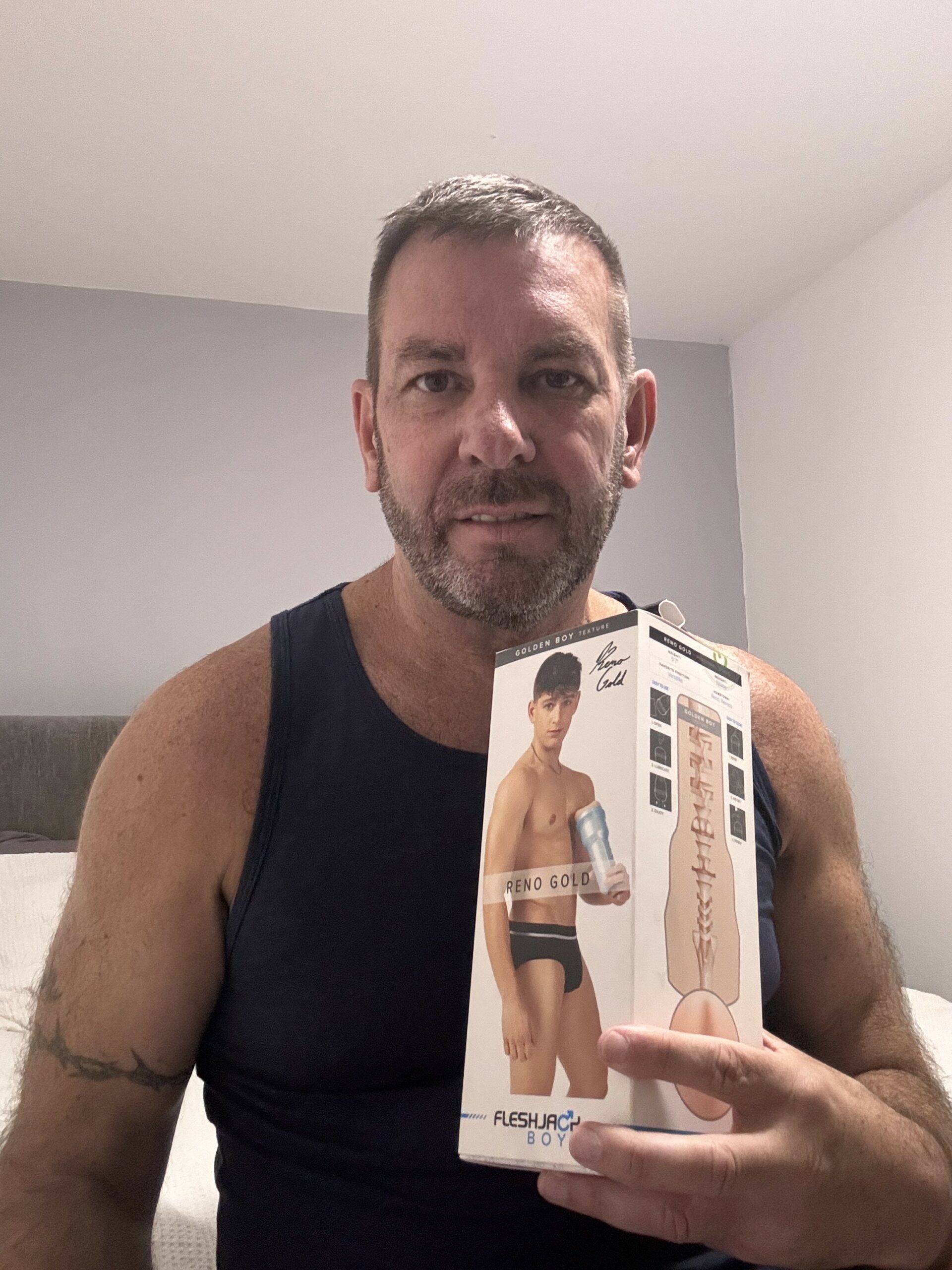
General Erogenous Zones
The human body has countless areas that, when stimulated, can unleash immense pleasure and satisfaction. These erogenous zones are strategically located to maximize the sensation of delight and enjoyment. From gentle whispers to passionate touch, knowing how to stimulate these sensitive spots can elevate intimate moments into unforgettable experiences.

Lower Back
The lower back, also known as the lumbar region, is a sensitive area that can provide immense pleasure when stimulated. This zone includes the muscles and nerves in the lower back, which run from the base of the spine to the hips. Massaging or rubbing this area can be extremely relaxing and intimate.
Stimulating the lower back can also release endorphins, also known as “feel-good” hormones, which can enhance the overall sensual experience. This zone is often referred to as a “power zone” because of its ability to affect both physical and emotional sensations. When massaged or caressed, the muscles in this area can tense up and then release, creating a sensation of deep relaxation.
Some tips for stimulating the lower back include using long strokes or gentle circles with your fingertips, applying pressure with your palms or fists, or even using a feather-light touch to tease the nerves. Experimenting with different techniques and pressures can help you find what works best for your partner or yourself.
Sensory Erogenous Zones
The human body is home to numerous erogenous zones, areas that are sensitive and responsive to touch, pressure, and other forms of stimulation. These zones can be found throughout the body, but some areas are more prone to eliciting intense pleasure than others. By targeting these erogenous zones through various forms of stimulation, individuals can experience heightened sensations, increased intimacy, and enhanced overall pleasure.
Nipples and Areola
Sensory erogenous zones are areas of the body that are richly innervated with nerve endings, making them highly sensitive to touch and stimulation. These zones can be found throughout the body, but some areas are particularly responsive to gentle caresses, soft whispers, or delicate kisses.
- Nipples and areola
- The inner thighs
- The base of the neck
- The shoulders
- The breasts
- The ears
- The scalp
- The soles of the feet
- The sides of the hips and thighs
- The abdomen
- The upper arms
- The navel
- The genital area (for both men and women)
- The lips and mouth
Intimate Erogenous Zones
The human body is home to numerous sensitive areas that, when stimulated, can release intense feelings of pleasure and relaxation. These erogenous zones, also known as erogenous areas or erotic zones, are scattered throughout the body and can be easily accessed by various forms of touch, pressure, and sensation. collection black When stimulated in a specific way, these areas can heighten sensitivity, increase arousal, and lead to enhanced overall satisfaction. In this article, we will explore 29 of the most sensitive erogenous zones you must stimulate for maximum pleasure.
Pubic Bone
The pubic bone, located at the front of the pelvis, is considered an intimate erogenous zone due to its sensitivity and responsiveness to stimulation.
Stimulating this area can be achieved through various means such as gentle caressing, soft kisses, or more intense touch. The pubic bone is also surrounded by sensitive skin and nerves that can respond well to pressure, making it a highly pleasurable spot for couples to explore during intimacy.
In addition, the pubic bone is often associated with feelings of connection and closeness with one’s partner, as it is a shared space that can be explored and enjoyed together. By paying attention to this erogenous zone, individuals can deepen their emotional connection and enhance their overall sexual experience.
Genital Erogenous Zones
When it comes to achieving maximum pleasure, understanding the erogenous zones on and around the body can make all the difference. These sensitive areas, often referred to as “sensitive spots” or “erotic zones,” contain a high concentration of nerve endings that respond to touch, pressure, and other forms of stimulation. Stimulating these areas can lead to intense feelings of pleasure, relaxation, and even orgasm. In this article, we will explore 29 erogenous zones that are sure to ignite your passion and leave you feeling satisfied.
Vagina
The human body is home to numerous erogenous zones, areas that are sensitive and can provide intense pleasure when stimulated. These zones can be found in various parts of the body, from the extremities to the core. Understanding where these zones are located can help individuals explore new ways to enhance their intimacy and pleasure.

- The lips and surrounding area of the mouth
- The ears, particularly the outer rim
- The base of the throat
- The chest, nipples, and breast tissue
- The belly button
- The inner thighs
- The base of the spine, specifically the small of the back
- The soles of the feet
For women, the vagina is a highly sensitive erogenous zone. The walls of the vagina contain thousands of nerve endings that can be stimulated through various means, such as touch, pressure, or movement.

- The clitoris: Located above the vaginal opening, the clitoris is a highly sensitive area that plays a significant role in female orgasmic pleasure
- The labia: The outer lips of the vulva can be sensitive to touch and stimulation
- The inner walls of the vagina: Gentle rubbing or stroking can stimulate these nerve endings, leading to intense pleasure
- The perineum: This area between the vagina and anus is another erogenous zone for many women
Clitoris
The clitoris is often referred to as the most sensitive part of the female genitalia, playing a significant role in female orgasm and overall sexual pleasure. Located at the top of the vulva, it’s a small, highly innervated organ that responds extremely well to touch, vibration, and other forms of stimulation.
Anatomically, the clitoris is not directly connected to the penis, but its function and sensation are often linked to male pleasure. It’s composed of three main parts: the glans (the visible tip), the shaft (or body), and the crura (the roots that extend deep into the body). The clitoris has over 8,000 nerve endings, making it one of the most sensitive areas in the human body.
Stimulating the clitoris can bring women immense pleasure, but it’s essential to remember that every woman is unique, and what works for one person may not work for another. Some find that gentle touch or soft suction is enough, while others prefer more intense stimulation or specific techniques. Understanding an individual’s preferences and boundaries is crucial for creating a satisfying experience.
Penile Erogenous Zones (Men)
The human body contains numerous erogenous zones, areas that are sensitive and can provide intense pleasure when stimulated. These zones can be found throughout the body, but some are more prominent in men than others.
For men, there are several penile erogenous zones that can increase sensitivity and enhance pleasure. The shaft of the penis is a broad area that can be stimulated using various techniques, including rubbing, massaging, or applying pressure. The head of the penis, also known as the glans, is another sensitive area that responds well to gentle touch and vibrations.
Other areas on the body, such as the testicles, perineum (the region between the scrotum and anus), and the base of the penis, can also be highly sensitive and erogenous. Stimulating these areas can release endorphins, which are natural mood elevators that can enhance the overall pleasure experience.
Using the right techniques, such as gentle touch, massages, or vibrations, can help to unlock these erogenous zones and provide maximum pleasure for men. Experimenting with different methods of stimulation can also help to identify individual preferences and areas of greatest sensitivity.
Sexual Erogenous Zones
The human body is a complex and intricate map of sensitive areas, each designed to provide unique pleasure and satisfaction. These erogenous zones, also known as erogenic points or erotic zones, are strategically located throughout the body and can be stimulated through various forms of touch, pressure, and sensation. By understanding where these zones are located and how they respond to different types of stimulation, individuals can unlock new levels of intimacy and pleasure in their relationships.
Anus (Men)
The anus, also known as the rear end or backside, is considered a sensitive and erogenous zone in both men and women. While it may not be as widely discussed as other areas of the body, the anus contains a high concentration of nerve endings, making it a potentially pleasurable area to stimulate.
Stimulation of the anus can be achieved through various methods, including manual touch, oral stimulation, or even anal play with sex toys. For men, this can involve gentle rubbing or prodding of the perineum, which is the area between the testicles and the anus. This area contains a high concentration of sensitive nerves that can lead to intense pleasure when stimulated.
Another erogenous zone in the male anatomy is the region surrounding the anus, particularly the sphincter muscles. These muscles are responsible for controlling the flow of bowel movements and can become extremely sensitive when stimulated. Men who engage in anal play or have experienced anal sex may find that this area becomes highly erogenous over time.
It’s worth noting that everyone’s body is different, and what may be an erogenous zone for one person may not be the same for another. Experimentation and communication with a partner are key to discovering individual areas of sensitivity and pleasure.
Perineum (Men and Women)
The human body is home to numerous erogenous zones, areas that are sensitive and respond intensely to touch, caress, or other forms of stimulation. These zones can vary from person to person in terms of sensitivity and pleasure response. While some people may find certain areas extremely pleasurable, others may not experience as much satisfaction. Here’s an overview of one such zone, the perineum, which affects both men and women.
The perineum is a triangular area located between the pubic bone at the front and the tailbone (coccyx) at the back. It includes the genital area, including the scrotum in men and the vulva in women. Stimulation of this region can be very pleasurable for both genders.
In men, the perineum is rich in nerve endings, making it a sensitive area. Stimulating this zone can lead to intense pleasure and may even contribute to orgasm. In women, the perineum also contains nerve endings, although they are less concentrated than in men. However, some research suggests that stimulation of the perineum can be a source of intense pleasure for many women.
Stimulation of the perineum can involve various forms of touch, including gentle caresses, firmer pressure, or even more sensual and intimate activities. The key is to find what works best for each individual, as sensitivity and pleasure response can vary greatly.
Erogenous Zones and Emotions
The human body is a complex web of nerve endings and sensory receptors, each capable of triggering intense emotional and physical responses when stimulated in specific ways. These sensitive areas, collectively known as erogenous zones, have been revered throughout history for their ability to evoke profound pleasure, relaxation, and even spiritual connection. By targeting these hidden hotspots, individuals can unlock new levels of intimacy and sensuality in themselves and their partners, allowing them to tap into a deeper sense of emotional fulfillment and overall well-being.
Negative Associations
Erogenous zones and emotions are closely linked, as stimulation of these areas can evoke intense feelings and sensations that extend beyond mere physical pleasure. Emotions such as arousal, relaxation, and even pain can be deeply intertwined with the experience of stimulation in these zones.
Research has shown that erogenous zones are often associated with a network of nerve endings that transmit emotional information to the brain, making them a key component in the complex interplay between body and mind. Stimulating these areas can trigger a cascade of emotions, ranging from pleasure and excitement to anxiety and discomfort.
When we experience pleasure or arousal in an erogenous zone, it’s not just our physical sensations that are affected – our emotional state is also influenced. This can lead to a range of complex emotional responses, including feelings of vulnerability, intimacy, and connection with our partner or ourselves.
Conversely, negative associations in language can also impact the experience of erogenous zones. Traumatic experiences, societal conditioning, or past relationships can all contribute to the development of negative emotional connections to these areas, making it more challenging to experience pleasure or relaxation.
In order to harness the full potential of erogenous zones and maximize emotional connection, it’s essential to approach stimulation with a nuanced understanding of the complex interplay between body, mind, and emotion. By acknowledging the intricate web of emotions and sensations involved, we can cultivate a deeper appreciation for the rich and multifaceted experience of pleasure.
Erogenous Zone Stimulation Techniques
Erogenous zone stimulation techniques are a key component of achieving maximum pleasure during intimate activities. By understanding the anatomy of sensitive areas and using targeted techniques, individuals can unlock a world of new sensations and experiences. This guide will explore 29 specific erogenous zones, detailing the techniques and tips for stimulating each one to maximize pleasure.
Foreplay
Foreplay is an essential aspect of intimate relationships, and it’s all about creating a sensual experience that sets the stage for mutual pleasure. One key element of foreplay is stimulation of the erogenous zones, which are areas of the body that are rich in nerve endings and respond intensely to touch, pressure, and other forms of stimulation. These zones can be found throughout the body, but some are particularly sensitive and require gentle yet deliberate attention.
Here’s a breakdown of some of the most sensitive erogenous zones:

- The neck and throat: Gentle caresses and soft kisses on this area can send shivers down the spine and heighten sensitivity.
- The breasts: Soft touch, sucking, and nibbling can create immense pleasure in both men and women.
- The nipples: Similar to the breasts, gentle stimulation of the nipples can evoke strong reactions.
- The genitals: Self-stimulation or partner stimulation of the clitoris, vulva, penis, scrotum, or testicles can be incredibly pleasurable.
- The inner thighs: Softly brushing against this area can create immense sensitivity and pleasure.
- The buttocks: Light touches, kisses, or gentle caresses can awaken dormant sensations in this area.
- The ears: Gentle tugs on the lobes, nibbles, or soft caresses can create intense pleasure.
- The lips and mouth: Soft kisses, licks, and nips can be incredibly arousing.
Stimulating these erogenous zones through various techniques can add a new dimension to your intimate experiences. Remember, communication with your partner is key – make sure to discuss what feels good for both of you and explore each other’s boundaries together.
Pressure and Touch
Stimulation of erogenous zones can be an effective way to enhance pleasure and intimacy in a relationship. By understanding where these areas are located, individuals can learn how to apply pressure and touch in a manner that brings maximum satisfaction.
The following techniques can be applied to stimulate various erogenous zones:
- The clitoris: Stimulation of the clitoris can lead to intense pleasure and orgasm. Techniques include gentle rubbing, circular motions, and soft pressure.
- The nipples: Nipple stimulation can bring immense pleasure due to its sensitivity. Techniques include firm grasping, rolling, or gentle squeezing.
- The ears: Erogenous zones in the ears can be sensitive to touch. Techniques include light strokes, whispers, and gentle nibbling.
- The lips and mouth: Kisses, licks, and soft biting can create intense pleasure in this area. Techniques include exploring different textures and sensations.
- The neck and throat: Gentle pressure on the neck and throat area can be erogenous due to its high concentration of nerve endings. Techniques include light stroking and whispering sweet nothings.
- The hands and feet: Erogenous zones in these areas can be sensitive, especially if massaged or stimulated with gentle pressure.
Understanding the sensitivity and responsiveness of one’s erogenous zones is key to enjoying maximum pleasure through stimulation techniques. Experimentation with different pressures and touch styles can help individuals discover what brings them the most joy and satisfaction in their intimate experiences.
Vibration and Humidity
Erogenous zone stimulation techniques can be highly effective in achieving maximum pleasure, particularly when combined with vibration and controlled humidity levels.
Vibration plays a significant role in enhancing sexual arousal and pleasure. It can be applied through various methods, including the use of vibrators or even household items like motors or fans. When used correctly, vibration can increase sensitivity and create intense sensations. For optimal results, focus on applying gentle to moderate vibrations to specific erogenous zones, allowing the body to adjust and become accustomed to the sensation.
Controlled humidity levels also significantly contribute to an enhanced sexual experience. A humid environment facilitates natural lubrication, which is crucial for comfortable and enjoyable stimulation. Maintaining a level of humidity between 40-60% can help prevent dryness while ensuring optimal comfort for both partners. Incorporating a humidifier or other moisture-enhancing devices into your intimate activities can significantly elevate sensations and overall pleasure.
Combining these elements with targeted erogenous zone stimulation techniques can lead to unparalleled intensity and satisfaction. It’s essential to explore each individual’s unique preferences and boundaries to maximize the effectiveness of these methods, ensuring a tailored approach that suits each person’s needs.
Erogenous zone mapping is also crucial in pinpointing areas most responsive to stimulation. By identifying sensitive zones, individuals can tailor their approaches, incorporating various techniques such as touch, pressure, or gentle vibrations, to optimize pleasure and satisfaction.
Risks and Precautions
Engaging in intimate activities can be a delightful experience, but it’s essential to be aware of potential risks and take necessary precautions to ensure safety and well-being for both partners involved. This section will discuss the importance of being informed about the body’s erogenous zones, how they respond to stimulation, and the potential consequences of neglecting or mismanaging these sensitive areas. By understanding the intricacies of human anatomy and the effects of different forms of stimulation, individuals can cultivate a deeper connection with their partner and enhance overall pleasure and satisfaction.
Safety Concerns
Risks and Precautions: While exploring one’s erogenous zones can be a highly enjoyable and liberating experience, it’s essential to approach this topic with caution. Engaging in any form of stimulation or intimacy requires consideration for both partners’ physical and emotional well-being.
Safety Concerns: Certain activities may pose risks, especially if not executed properly. For instance, inserting objects into the vagina or anus without proper lubrication can cause severe discomfort, bleeding, or even infection. Additionally, engaging in BDSM practices without clear communication and consent can lead to physical or emotional harm.
Precautions for Safe Exploration: To minimize risks, engage in open and honest communication with your partner about boundaries, desires, and any concerns. Establish a safe word or signal to stop immediately if either party becomes uncomfortable. Practice safe sex by using condoms and lubricants to prevent STIs and unwanted pregnancy. Additionally, be mindful of physical limitations and take regular breaks to avoid fatigue.
Allergies and Sensitivities
Risks and Precautions, Allergies and Sensitivities are important considerations to take into account when exploring your body’s erogenous zones. It’s essential to be aware of any potential allergies or sensitivities you may have to certain substances or materials, as well as any medical conditions that may affect your ability to engage in certain activities.
Some people may experience allergic reactions or irritation from latex condoms, spermicides, or other products used during intimate activities. Others may have sensitivities to certain fabrics or textures, such as silk or wool. It’s crucial to choose products that are hypoallergenic and gentle on the skin to minimize the risk of discomfort or infection.
Additionally, individuals with certain medical conditions, such as herpes or genital warts, should take extra precautions to prevent transmission of STIs. Engaging in safe sex practices, such as using condoms and getting regular testing, can help reduce the risk of transmission and ensure a healthy and enjoyable experience.
It’s also important to be mindful of your own physical limitations and boundaries when exploring your erogenous zones. Communication with your partner is key to ensuring that both parties are comfortable and consenting to any activities.
Finally, if you experience any discomfort, pain, or unusual symptoms after engaging in intimate activities, seek medical attention immediately. Ignoring these signs can lead to more severe complications and long-term damage to your health.
Shop oral sex enhancement sprays and gels for added pleasure at Peaches and Screams Shop erotic massage candles for a sensual experience at Peaches and Screams Buy Sexy Teddies for sensual and intimate wear at Peaches and Screams Discover discontinued products for unique finds at Peaches and Screams Explore inflatable dildo balls for unique play at Peaches and Screams Discover sexy secretary outfits for a bold, professional style at Peaches and Screams
Cleveland Relationship Therapy Azmia Magane W1 Wellness Market Day ME


